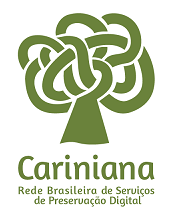The man of the crowd and the flanêur in: Edgar Allan Poe's short-story "the man of the crowd"
DOI:
https://doi.org/10.5433/1678-2054.2008v12p55Keywords:
Modernity, Urban aesthetics, Flanêur, SpaceAbstract
This paper analyses, through the reading of Walter Benjamin, the differences between the flanêur and the man of the crowd in Edgar Allan Poe's short story "The man of the Crowd", as well as the constitution of the flanêur as a privileged observer of that society and flanêurie as a means of apprehension and representation of that new space.Downloads
References
BENJAMIN, Walter . Obras escolhidas III: Charles Baudelaire um lírico no auge do capitalismo. 3a. ed. São Paulo: Brasiliense, 1994.
ENGELS, F. A situação da classe trabalhadora na Inglaterra. Rio de Janeiro: Global, 1985.
FRIEDMANN, G. La crise du progrès, Paris, 1936.
MORSE, Margaret. "An ontology of everyday distraction: The freeway, the mall, and television." Patricia Mellencamp, ed. Logics of television: Essays in cultural criticism. Bloomington: Indiana University Press, 1998. 193-221.
POE, Edgar Allan. Os melhores contos de Edgar Allan Poe. Trad. Oscar Mendes e Milton Amado. 3. ed. São Paulo: Globo, 1999.
WHITE, Edmund. O Flanêur. São Paulo: Companhia das Letras, 2002.
WILSON, Elizabeth. "The Invisible Flanêur." New Left Review 191 (Feb 1992).
Downloads
Published
How to Cite
Issue
Section
License
Copyright (c) 2008 Terra Roxa e Outras Terras: Revista de Estudos Literários

This work is licensed under a Creative Commons Attribution 4.0 International License.
Authors who publish in this journal agree to the following terms:
a) The authors retain the copyright and grant the journal the right of first publication, the work being simultaneously licensed under the Creative Commons Attribution-NonCommercial 4.0 International License, allowing the sharing of the work with acknowledgment of the authorship of the work and initial publication in this journal.
b) Authors are authorized to assume additional contracts separately, for non-exclusive distribution of the version of the work published in this journal (eg, publish in an institutional repository or as a book chapter), with acknowledgment of authorship and initial publication in this journal.
c) Authors are allowed and encouraged to publish and distribute their work online (e.g. in institutional repositories or on their personal page) after the editorial process, as this can generate productive changes as well as increase impact and citation of the published work (See The Effect of Open Access).
d) The authors of the approved works authorize the journal to, after publication, transfer their content for reproduction in content indexers, virtual libraries and the like.
e) The authors assume that the texts submitted for publication are of their original creation, taking full responsibility for their content in case of any objection by third parties.



















